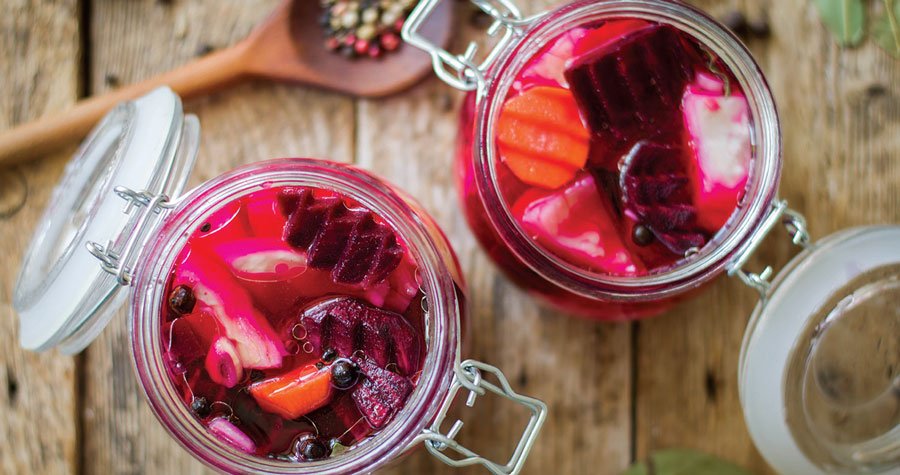
Winter Wholesome Goodness
- bey0ndM@gz!ne
- February 3, 2021
- Food-Recipe
- 0 Comments
GUT FRIENDLY IMMUNO KRAUT
Ingredients
- 6 cups red or green cabbage (finely grated or chopped)
- 1 ½ – 2 teaspoon sea salt or to taste
- 1 small beet (finely shredded)
- 1 carrot (shredded)
- 1 tumeric root (shredded)
- 1 tablespoon ginger (shredded)
- ¼ teaspoon freshly cracked black pepper
- ¼ teaspoon lightly toasted Carom or Ajwain seeds
Method
When fermenting anything, it’s best to give the good, beneficial bacteria every chance of succeeding by starting off with as clean an environment as possible.
Sterilise all the equipment that will be used for the fermentation, including bowls, spoons, knives, forks, jars with boiling hot water. Allow them to dry completely.
Transfer the cabbage to a big bowl and sprinkle the salt over top. Begin working the salt into the cabbage by massaging and squeezing the cabbage with your hands. At first it might not seem like enough salt, but gradually the cabbage will become watery and limp — more like coleslaw than raw cabbage. This will take 5 to 10 minutes.
Add in the shredded beet, carrot, turmeric, ginger, pepper and carom seeds. Massage further for another 4 to 5 minutes until everything is mixed in well.
Taste for salt, as you may wish to adjust. Working with clean hands, tightly pack the mixture into the jar, pressing down firmly. Pour in any liquid released by the cabbage while you were massaging it into the jar. If by any chance there is not enough liquid, top up with a small amount of filtered water, until all veggies are covered. Leave a gap of 1 to 2 inches between the veggies and lid to allow room for expansion. Seal and set on a counter away from direct sun exposure or in a cabinet. The ideal temperature for fermentation is above 18 degrees celsius. Fermentation should happen within 24 to 48 hours, provided the environment is warm. Otherwise, it could take up to a week!
Check your jar daily to release accumulated air (you should feel a release of pressure and see tiny air bubbles when you open the jar). Press the vegetables down once again with a sterilised spoon ensuring the vegetables are completely covered in the liquid.
Doing so will help encourage proper fermentation. Longer fermentation periods yield tangier kraut, so definitely taste test your kraut throughout to ensure it is just right for you! Once your fully satisfied, cover your kraut and store it in the refrigerator. It should keep for at least 1-2 months.




